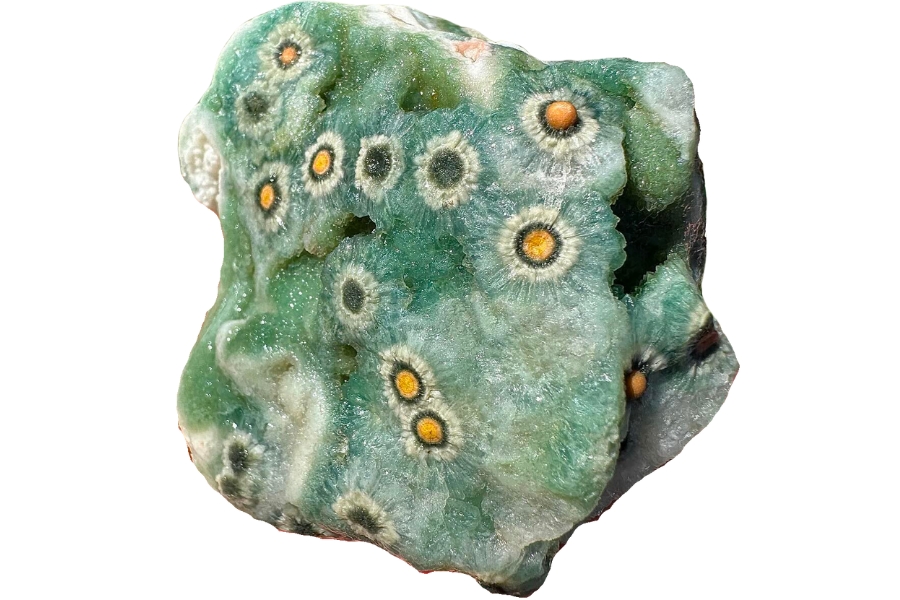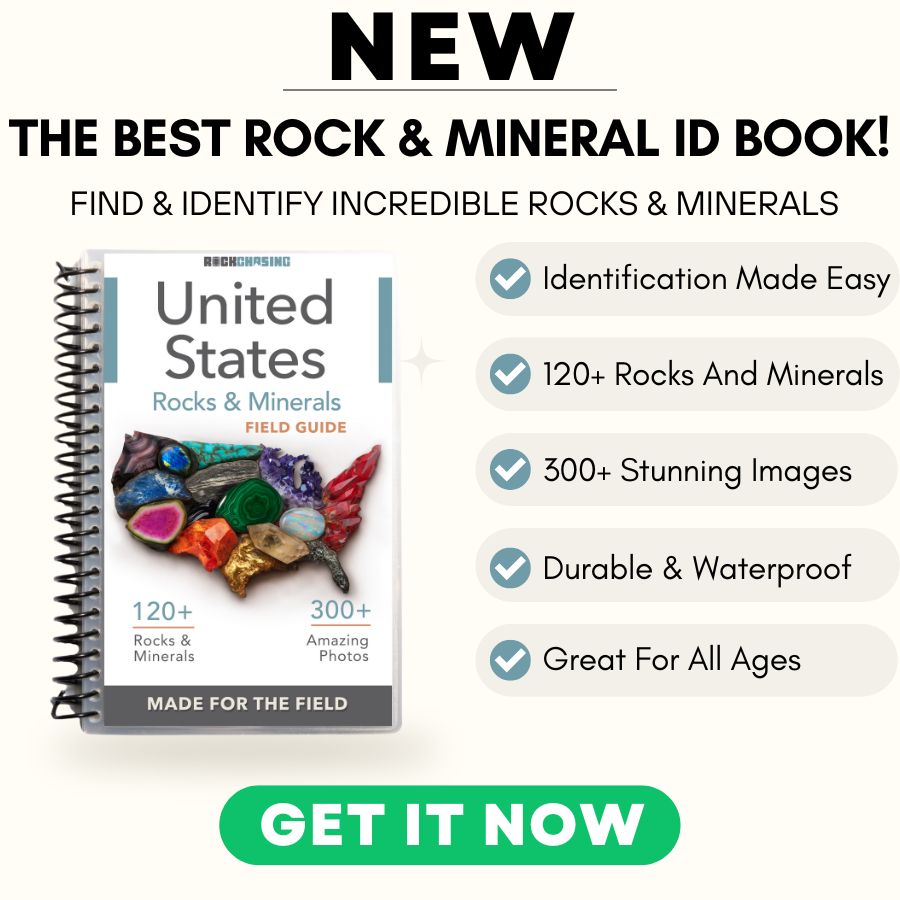Known for its vast deserts and rugged mountains, Arizona is a paradise for anyone eager to find jasper. The variety of this gemstone you can find here is simply amazing and breathtaking.
If you’re intrigued by the idea of finding jasper in Arizona, you’re in for a treat! In this article, we’ll share with you the prime spots for your jasper-hunting.
We’ll even share our favorites: Sunset Peak, Cabeza Prieta Mountains, Sycamore Canyon, Peloncillo Mountains, and Rawhide Mountains. In these places, the beauty of nature meets the diversity of Arizona jaspers that you can find.
From the hidden nooks in the desert to the sprawling hills of our state, our jasper treasures will make your exploration truly worth it! Let’s begin.
What Is Arizona Jasper Anyway?
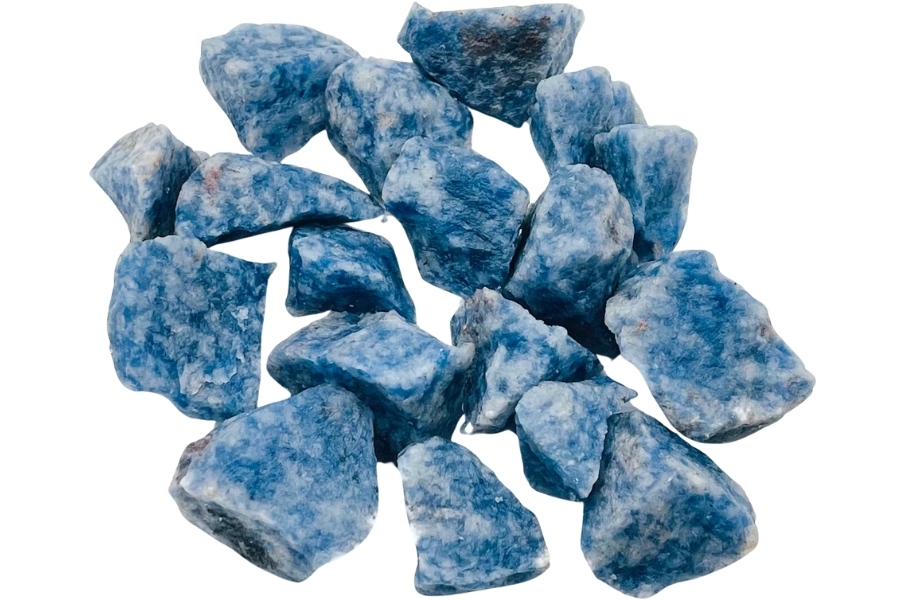
Jasper is a part of the quartz family that’s pretty special because of its amazing colors and patterns. You can find it in various colors like red, yellow, brown, green, and even blue. In fact, no two pieces of this gem are exactly the same!
Because of this, identifying jasper is a bit like being a detective. It’s usually opaque, which means you can’t see through it, and has a smooth surface. It can feel kind of waxy or like polished glass.
You can find it all over the world but it doesn’t make it any less exciting to find! Actually, the value of jasper is heavily influenced by its beauty and uniqueness. That’s why rockhounds and gem collectors find it so exciting to hunt for and collect.
In ancient times, this gem has been really popular for making jewelry, seals, and even as a healing stone.
Today, people still love jasper for jewelry like necklaces, bracelets, and rings. Some folks also believe that it has special healing powers and use it in spiritual practices.
The Types Of Jasper Found In Arizona
During your quest to find Arizona jasper, below are some of the varieties you have the chance to stumble upon:
- Black jasper
- Blue jasper
- Jasp-Agate
- Moss jasper
- Orbicular jasper
- Red jasper
Along the way, you might also come across some of the stunning crystals in Arizona. If you want more reliable guidance on finding them, check out our guide.
- The deep experience and understanding of our team about the area
- Recommendations from local groups and clubs
- How easy it is to get the a particular location
- Safety and potential hazards when collecting
- Weighing private and public locations
- The ability for both experienced and novice rock enthusiasts to find great samples
With these factors in mind we’ve been able to put together a fantastic list that just about anyone can use!
The Best Places To Find Jasper In Arizona
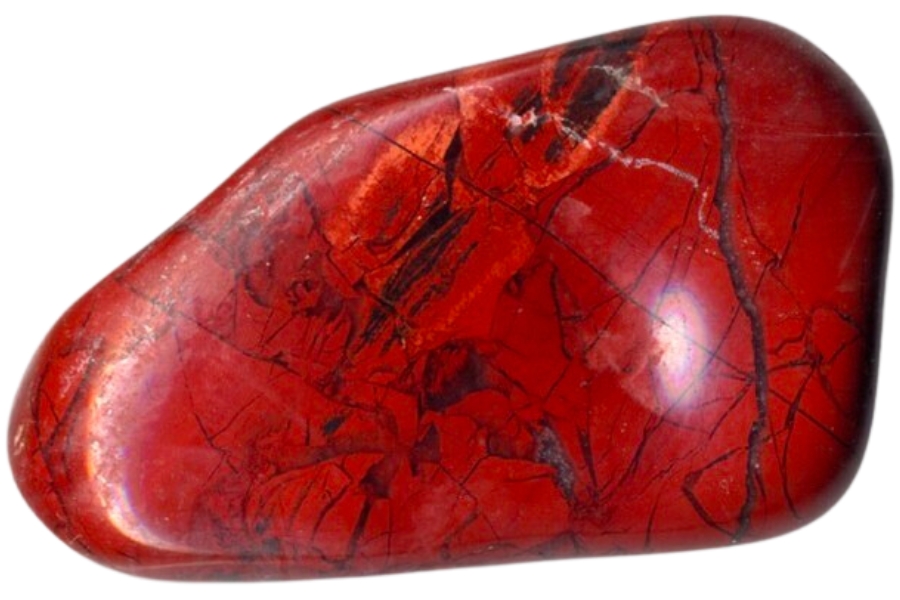
Our state is immensely endowed with rich geological treasures, so it’s no secret that there are many great gem mine sites in Arizona.
However, if you want to focus your hunt on finding jasper, here are our favorite sites where we had the most success uncovering this gem:
Always Confirm Access and Collection Rules!
Before heading out to any of the locations on our list you need to confirm access requirements and collection rules for both public and private locations directly with the location. We haven’t personally verified every location and the access requirements and collection rules often change without notice.
Many of the locations we mention will not allow collecting but are still great places for those who love to find beautiful rocks and minerals in the wild without keeping them. We also can’t guarantee you will find anything in these locations since they are constantly changing.
Always get updated information directly from the source ahead of time to ensure responsible rockhounding. If you want even more current options it’s always a good idea to contact local rock and mineral clubs and groups
Sunset Peak
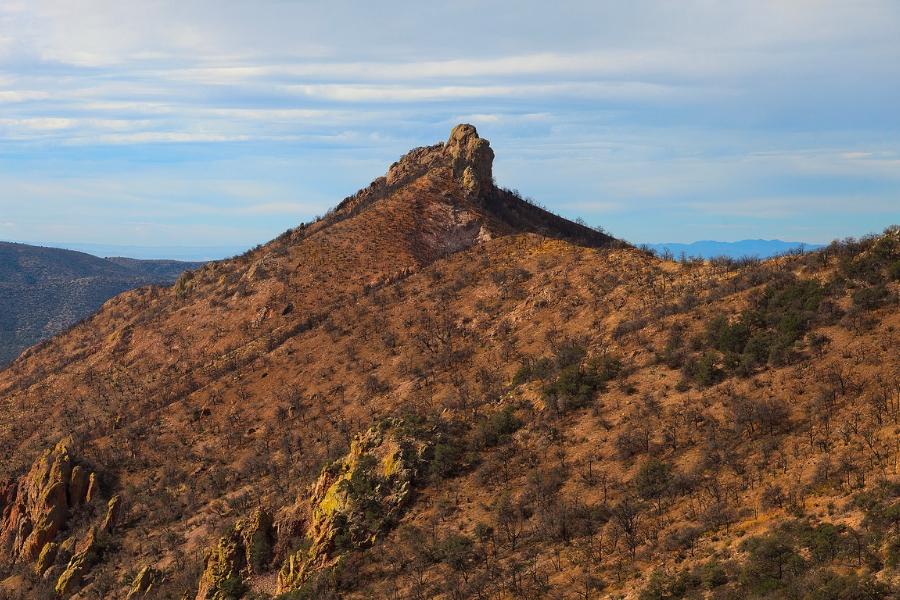
Sunset Peak is a fantastic spot that’s a part of the Bradshaw Mountains, located in central Arizona. The peak itself is pretty high, reaching up to about 5,869 feet, which gives you amazing views of the surrounding landscape.
Around this place, you’ve got everything from steep slopes to gentler areas covered in shrubs and trees like pines and junipers.
What’s exciting is the geology of this area. The Bradshaw Mountains are known for their rich mineral deposits. This means you can find cool rocks and minerals, including fascinating jasper.
In getting here, it’s best to have a 4-wheel drive vehicle because some of the roads can be rough. From Phoenix, head north on I-17. Take the exit for AZ-69 N towards Prescott, and then turn onto Poland Road, which will lead you into the Bradshaw Mountains.
Remember to review Arizona’s local collecting guidelines to make sure you are helping sustain our natural treasures for generations to come while hunting for beautiful jasper pieces.
Where we found jasper in the Sunset Peak
You can find captivating pieces of black and blue jasper if you explore the foothills of Sunset Peak.
If you want REAL results finding incredible rocks and minerals you need one of these 👇👇👇
Finding the coolest rocks in isn’t luck, it's knowing what to look for. Thousands of your fellow rock hunters are already carrying Rock Chasing field guides. Maybe it's time you joined the community.
Lightweight, mud-proof, and packed with clear photos, it’s become the go-to tool for anyone interested discovering what’s hidden under our red dirt and what they've already found.
Join them, and make your next rockhounding trip actually pay off.
What makes it different:
- 📍 Find and identify 140 incredible crystals, rocks, gemstones, minerals, and geodes across the USA
- 🚙 Field-tested across America's rivers, ranchlands, mountains, and roadcuts
- 📘 Heavy duty laminated pages resist dust, sweat, and water
- 🧠 Zero fluff — just clear visuals and straight-to-the-point info
- ⭐ Rated 4.8★ by real collectors who actually use it in the field
Cabeza Prieta Mountains
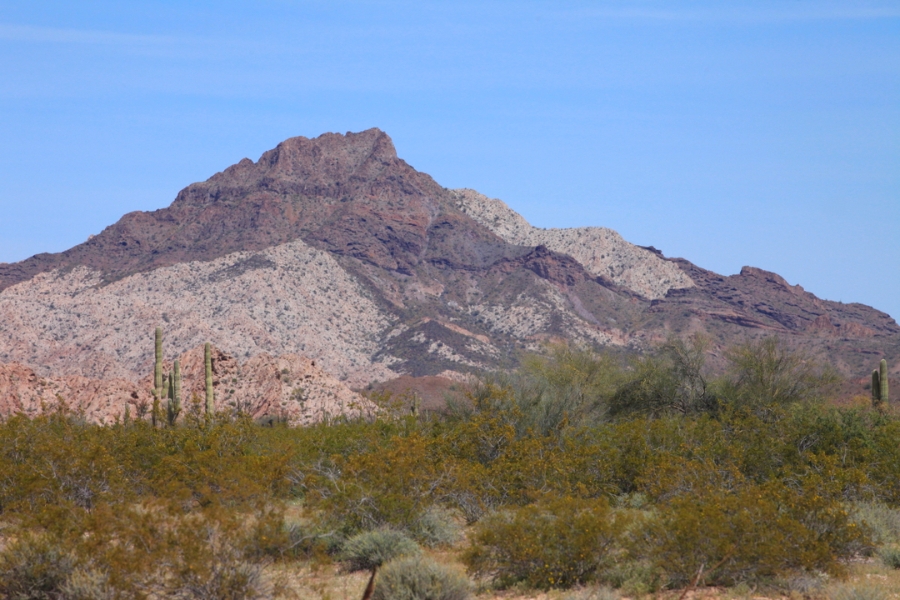
Cabeza Prieta Mountains are part of the Sonoran Desert, located in the southwestern part of our state. They stretch out over a pretty big area, offering lots of cool spots to explore.
With a geography that’s pretty rugged and wild, these mountains have some steep slopes and valleys that are fun to hike through. It’s mostly desert, with lots of cacti, like the famous saguaro, and other desert plants.
The mountains are made up of a mix of volcanic rocks and older, metamorphic rocks. This combination creates perfect conditions for finding jasper.
If you want to go here, you should know that the Cabeza Prieta Mountains is kind of remote. The closest big town is Yuma. From Yuma, head west on I-8, then take a turn onto AZ-85 heading south. You’ll need to get a permit from the Cabeza Prieta National Wildlife Refuge to enter, as it’s a protected area.
Where we found jasper in the Cabeza Prieta Mountains
We recommend exploring the area of many unlisted collecting localities in the Cabeza Prieta Mountains to see beautiful specimens of jasper and jasp-agates.
Sycamore Canyon
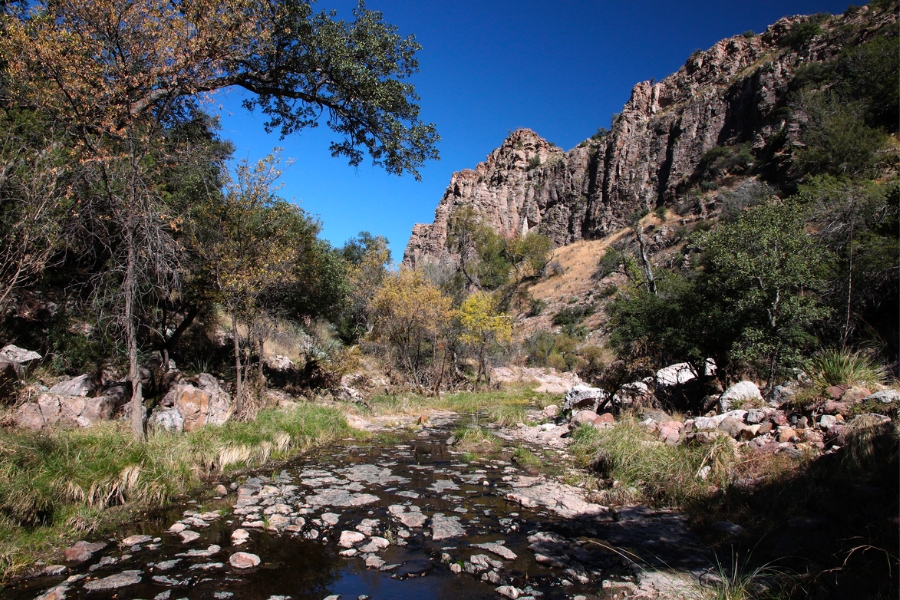
Sycamore Canyon is the second-largest canyon in Arizona and it’s located in the northern part of the state, not too far from Flagstaff and Sedona. It stretches for about 20 miles and has some pretty steep walls, which makes for amazing views.
A mix of rocky cliffs, lush green areas, and a beautiful stream runs through the bottom of the canyon. You’ll find all kinds of plants and animals here, making it a super fun outdoor adventure.
It’s also an ideal spot for rockhounding. You’ve got layers of sandstone and limestone, and in some areas, you can find basalt from ancient lava flows. This mix of rocks creates a great environment for jasper formation.
There are a few ways to get here, but one common route is from Flagstaff. Head south on I-17, then take AZ-89A towards Sedona. From there, follow signs to the Sycamore Canyon. There are several trailheads you can choose from, depending on how far you want to hike.
Where we found jasper in the Sycamore Canyon
The area breaks and side canyons of Sycamore Canyon have proven to be the best areas to explore if you want to find jasper here.
Peloncillo Mountains
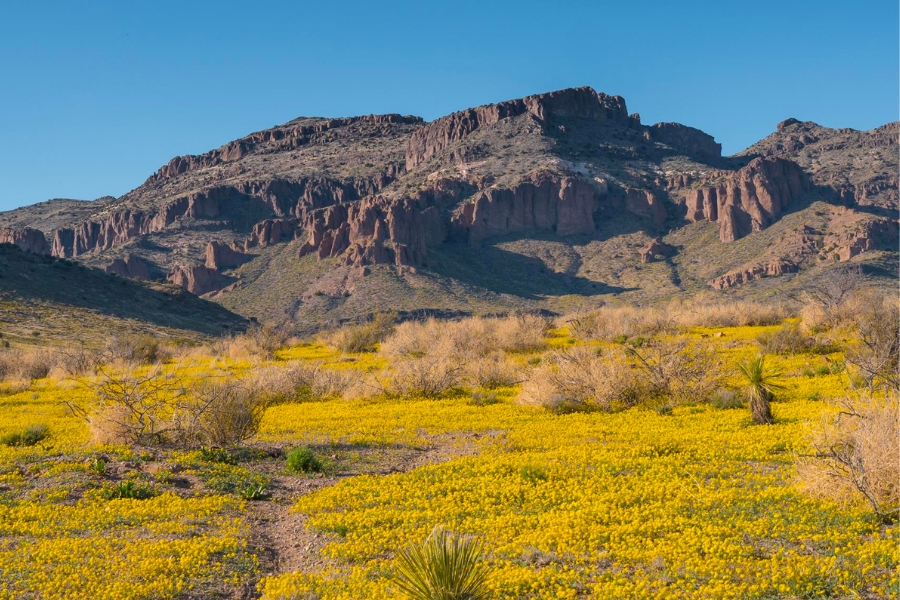
Peloncillo Mountains are on the border between Arizona and New Mexico in the southeastern part of our state. They’re not super tall, but they stretch out a long way and have lots of interesting things to see.
The terrain here is kind of rugged and wild. You’ll find lots of hills and valleys covered in desert plants like cacti and small shrubs. The mountains are home to a variety of wildlife, so it’s a great spot for nature watching too.
Peloncillo Mountains is known for volcanic rocks and ancient lava flows. This is great for finding jasper in all sorts of colors and patterns.
To pay a visit here, head to Lordsburg in New Mexico, the closest big town to the area. From there, you can drive west on I-10 into Arizona. Then, take a turn on a smaller road like AZ-80 or NM-338 towards the mountains. These roads can be a bit rough, so it’s good to have a sturdy car.
Where we found jasper in the Peloncillo Mountains
Search through the nooks and crannies of the Peloncillo Mountains to find mesmerizing jasper pieces.
Rawhide Mountains
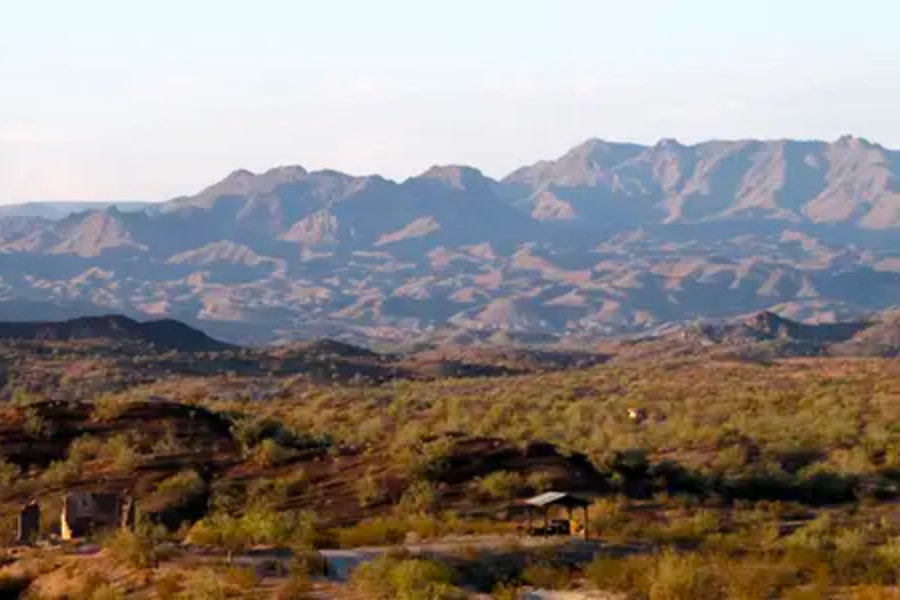
Rawhide Mountains are located in the western part of our state, near the border with California. They’re not as famous as some other places in Arizona, but that’s part of what makes them so special.
If you love being in a place that feels wild and untouched, these mountains are perfect. They are characterized by lots of hills, valleys, and washes. Its terrain is also mostly desert, so you can expect cacti, brush, and other desert trees here.
The geology here is a mix of volcanic and sedimentary rocks, which makes for a great place to find jasper.
The closest city to the Rawhide Mountains is Lake Havasu City. From there, you can take AZ-95 north and then turn onto a smaller road that leads into the mountains. These smaller roads can be rough, so a 4-wheel drive might be a good idea.
Where we found jasper in the Rawhide Mountains
To find large deposits of gem-quality jasper and jasp-agate, you can explore the area around the base of Rawhide Mountains, which towers over the campsite.
Other Great Places To Find Arizona Jasper
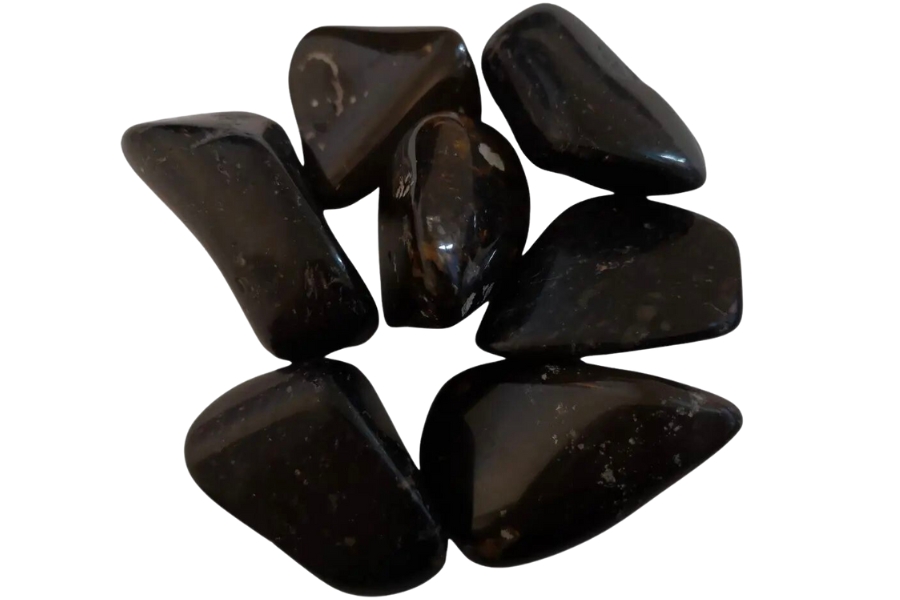
If you’re game for more prime spots where you can find jasper in Arizona, we’ve listed them below. We’ve found these great places through our personal experiences and those of the other rockhounds that have hunted here before.
Our recommendations by county
| County | Location |
| Apache | Echo Cliffs |
| Apache | Area to north of Chinle |
| Gila | Cypress Thicket |
| Gila | Surrounding forest at USFS guard station in Rte. 260 |
| Gila | River in Payson District |
| Gila | Roosevelt Reservoir |
| Graham | Black Rock road |
| Graham | Both sides of the highway in US 666 |
| Graham | Rough track in Safford |
| Graham | Stanley’s Deer Creek Basin |
| Graham | Copper Reef Mountain |
| Greenlee | Along sides of practically all roads in the county |
| Greenlee | Ash Spring Mountain and Ash Spring Canyon |
| Greenlee | York area |
| Greenlee | Dirt road near the old New Mexico checking station |
| Greenlee | Field area between low-rounded knolls in Solomon |
| Maricopa | Cave Creek-New River both sides of the cutoff road |
| Maricopa | Hill on the far side of Cave Creek |
| Maricopa | Old Go John Mine |
| Maricopa | Seven Springs-Bloody Basin road |
| Maricopa/td> | Scattered localities along the Cave Creek road |
| Maricopa | Both sides of the road from Morristown to Castle Hot Springs |
| Maricopa | Castle Hot Springs creek |
| Maricopa | Agua Fria River |
| Mohave | Many area old mines |
| Mohave | Natural cauldron near Mississippi Wash |
| Mohave | Gravels of the Colorado River terrace on both sides of the highway |
| Mohave | Sitgreaves or Meadow Creek Pass |
| Mohave | East side alluvial terraces on the gravels of Colorado River |
| Mohave | Oatman highway over Black Mountain via Sitgreaves Pass |
| Mohave | Burro Creek crossing by US 93 |
| Mohave | US 93 northwest of bridge |
| Pima | Area hills surrounding Ajo |
| Pinal | Wild Horse Pass |
| Pinal | Martinez Canyon |
| Yavapai | Prospect in Bagdad area |
| Yavapai | Copper Company openpit mine |
| Yavapai | Cattle Hot Springs area around the resort |
| Yavapai | Chino Valley area |
| Yavapai | Date Creek area |
| Yavapai | Area mines in Constellation |
| Yavapai | Many fields along both sides of the road in Perkinsville |
| Yavapai | Camp Creek campground area |
| Yavapai | Both sides of the road near Arizona Agate Mine |
| Yuma | Yuma Test Station |
| Yuma | Brenda service station |
| Yuma | North fork of dirt road in Castle Dome District |
| Yuma | Cibola area draw and washes |
| Yuma | Quartzite regional draws, washes, hillsides |
Common Jasper-Hunting Questions
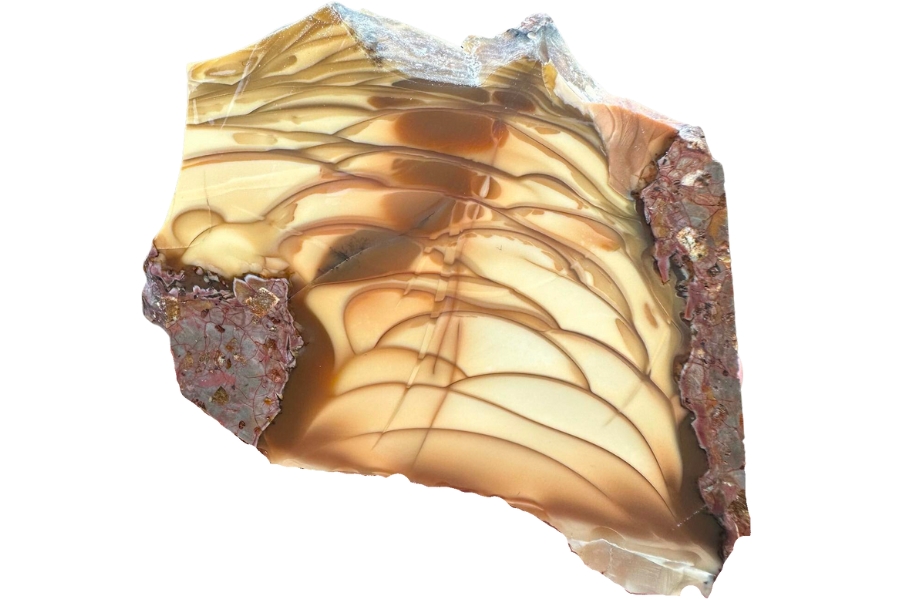
Many visitors have come to our state wondering about a single common question, so we’ll answer it now in case you have the same in mind:
Is it illegal to collect jasper in Arizona?
In Arizona, collecting jasper, like other rocks and minerals, is generally allowed, but there are important rules and restrictions to be aware of.
It’s legal to collect small amounts for personal use on most public lands, including Bureau of Land Management (BLM) areas and national forests. However, it’s illegal to collect in national parks, state parks, and certain protected areas.
If the land is privately owned, you must obtain permission from the landowner. Also, there are specific regulations regarding the amount you can collect without a permit, usually limited to what can be hand-carried.
It’s crucial to check the specific rules of the area where you plan to collect jasper, as regulations can vary. For more information, check the Arizona Department of Mines and Mineral Resources (ADMMR) website.
The Best Places To Buy Jasper In Arizona
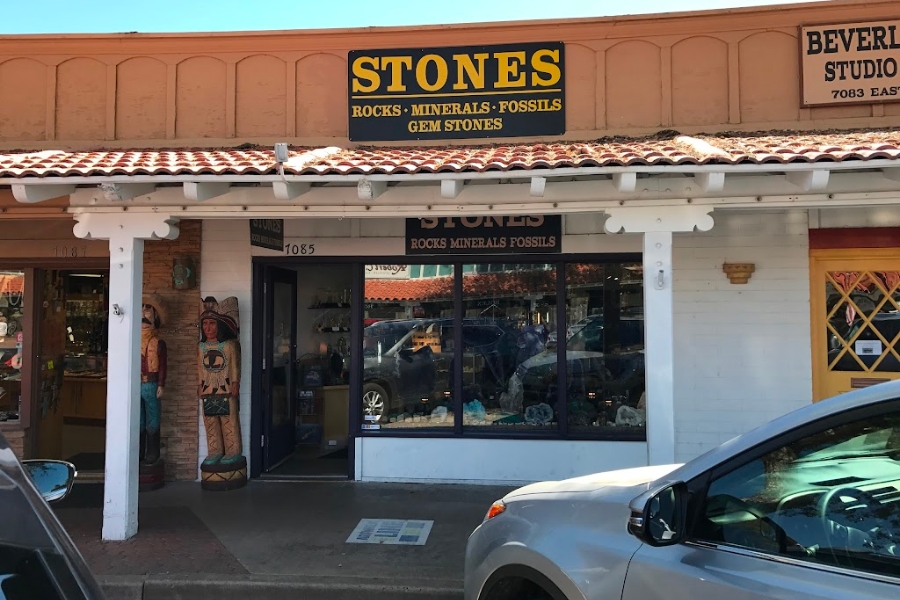
If you have limited time and energy but still want to make sure you can find jasper in Arizona, you can visit our local rock and mineral shops. Some of our trusted ones are listed below:
- Arizona Rock Shop – Tempe, AZ · Phoenix, AZ · Tucson, AZ · Quartzsite, AZ
- Copper Canyon Lapidary – 2160 Shelby Dr Ste 105A, Sedona, AZ 86336
- Four Peaks Mining Co. Store – 9500 East Vía de Ventura Suite D-110, Scottsdale, AZ 85256
- Miners Rock Shop – 1103 W Fairmont Dr, Tempe, AZ 85282
- Stones Crystal Shop – 7085 E 5th Ave, Scottsdale, AZ 85251

